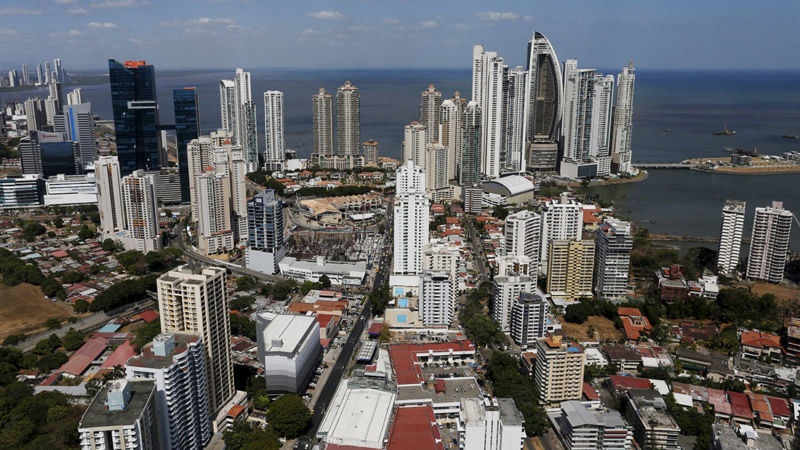On September 5, 2018, Panama’s National Assembly (a unicameral Parliament), during its first reading, announced its approval of draft Bill No. 654 of July 16, 2018 [1], which includes proposals to calculate income derived from the assignment or exploitation of intangible assets. The draft bill will now be considered during a plenary session of the National Assembly.
On July 16, 2018, Panama’s Ministry of Economy and Finance (MEF) sent draft Bill No. 654 to the National Assembly for consideration. The bill would impose a preferential tax rate on income from specific IP under the OECD’s BEPS Action 5 “modified nexus” approach.
According to draft Bill No. 654[1], the OECD Forum on Harmful Tax Practices (FHTP) reviewed several Panamanian tax incentive regimes , and issued recommendations that Panama must implement by December 31, 2018, to comply with BEPS Action 5.
The proposed legislation would require taxpayers to maintain accounting records that substantiate their qualification for any current Panamanian tax incentives (e.g., the regional headquarters regime (Sedes de Empresas Multinacionales or SEM)), with penalties for non-compliance. Taxpayers would have to track qualifying expenses and income from qualifying intangibles.
Panamanian tax incentives for intangibles would apply when the taxpayer shows a relationship between the total income derived from IP and the expenses generated by corresponding research and development (R&D). Draft Bill No. 654[1], would classify intangible assets as “identifiable” (e.g., trademark, copyrights, licenses for use) and “not identifiable” (e.g., advertising, organization expenses, among others). Only “identifiable” intangible assets would qualify for preferential tax treatment in Panama.
To determine the amount of income qualifying for exemption or preferential treatment, the following formula would apply:
- (Qualifying expenditures incurred to develop IP asset / Overall expenditures incurred to develop IP asset) x Overall income from IP asset = Income receiving tax benefits
The formula would also allow taxpayers to increase their qualifying expenses (i.e., an uplift). While the 30% uplift would be the maximum permitted, draft Bill No. 654[1], says Panama would set the amount in future regulations.
Background
The international community has expressed concern regarding preferential regimes that are used to artificially shift profits. In 2014, the FHTP delivered an initial progress report, which is incorporated into the Action 5 final report. The FHTP has been working on a methodology to define the substantial activity requirement to evaluate preferential regimes, specifically focusing on IP regimes.
The position of some countries is that the substantial activity requirement should be strengthened to realign the taxation of profits with the substantial activities that generate them. Consensus was eventually reached on the “nexus approach,” which allows a taxpayer to benefit from an IP regime only to the extent that the taxpayer itself incurred qualifying R&D expenditures that gave rise to the IP income.
The nexus approach uses expenditure as a proxy for activity since IP regimes are designed to encourage R&D activities and to foster growth and employment. This principle can also be applied to other preferential regimes to require substantial activities when a country grants benefits to a taxpayer to the extent that the taxpayer undertook the core income-generating activities required to produce the type of income covered by the preferential regime.
Qualifying Expenditures (IP assets)
The Action 5 final report confirms that qualifying expenditure must have been incurred by a qualifying taxpayer, and must be directly connected to the IP asset. This includes expenditures that currently qualify for R&D tax credits under domestic tax legislation, such as unrelated-party outsourcing and improvements to acquired IP, but exclude interest, building costs, acquisition costs, and costs not directly linked to a specific IP asset.
The report introduces the following significant modifications:
- Countries may permit taxpayers to apply a 30% uplift to expenditures included in qualifying expenditures, subject to a cap equal to the taxpayer’s overall expenditures. The purpose of the uplift is to ensure that the nexus approach does not over-penalize taxpayers for acquiring IP or outsourcing R&D activities to related parties (which are not otherwise considered “qualifying expenditures”).
- General and speculative R&D costs may be spread pro rata across IP assets and products.
- Qualifying expenditures are included in the nexus calculation when they are incurred, regardless of tax or accounting treatment.
Overall Expenditures (IP assets)
The Action 5 final report confirms that overall expenditures are the sum of all expenditures that would count as qualifying expenditures, if incurred by the taxpayer. The report emphasizes that the nexus approach does not include all expenditures incurred on the development of an IP asset in overall expenditures. It only adds expenditures for related party outsourcing and the cost of acquiring IP for determining “overall expenditures.” If IP is acquired from a related party, an arm’s-length price must be used in the nexus ratio.
Expenditure on unsuccessful R&D is not included in the nexus ratio. However, R&D expenditures incurred in connection with a larger R&D project that produces an income-generating asset could be treated as general or speculative R&D.
Overall Income
The Action 5 final report confirms that countries will define overall income in accordance with their own domestic rules, but clarifies that this will be after the application of transfer pricing rules. The final report also specifies that countries that grant tax benefits to “embedded IP income” must have an acceptable method for separating income unrelated to IP. (Embedded IP income is income from the sale of products and the use of processes directly related to the IP asset).
OECD Progress Reports on Preferential Regimes
On October 16, 2017, the OECD published Harmful Tax Practices – 2017 Progress Report on Preferential Regimes (the “Report”). Since the publication of the Action 5 final report, the FHTP has reviewed 164 preferential regimes. The Report includes regimes reviewed by FHTP in 2016 and 2017.
Jurisdictions that have preferential regimes, which are in the process of being amended, eliminated, or are harmful are expected to either abolish or amend their regimes. With respect to IP regimes of new members of the Inclusive Framework, no new entrants are permitted after June 30, 2018, and grandfathering of existing entrants is provided until June 30, 2021.
Inclusive Framework members have agreed to an ambitious timeline, whereby jurisdictions whose regimes have harmful features are expected to adjust their regimes as soon as possible, and generally no later than October 2018. The OECD says that it will continue to publish the results of reviews of preferential regimes and the progress that jurisdictions are making to adjust them.
Click here for more information on our BEPS research and technology solutions to address your immediate and ongoing needs.
[1] Draft Bill No. 654:
http://www.asamblea.gob.pa/proyley/2018_P_654.pdf







